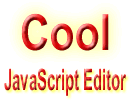Intended Audience
The primary audience for this book is application programmers who want to write shaders. This book can be used as both a tutorial and a reference book by people interested in learning to write shaders with the OpenGL Shading Language. Some will use the book in one fashion, and some in the other. The organization is amenable to both uses and is based on the assumption that most people won't read the book in sequential order from back to front (but some intrepid readers of the first edition reported that they did just that!).
Readers do not need previous knowledge of OpenGL to absorb the material in this book, but such knowledge is very helpful. A brief review of OpenGL is included, but this book does not attempt to be a tutorial or reference book for OpenGL. Anyone attempting to develop an OpenGL application that uses shaders should be armed with OpenGL programming documentation in addition to this book.
Computer graphics has a mathematical basis, so some knowledge of algebra, trigonometry, and calculus will help readers understand and appreciate some of the details presented. With the advent of programmable graphics hardware, key parts of the graphics processing pipeline are once again under the control of software developers. To develop shaders successfully in this environment, developers must understand the mathematical basis of computer graphics.
 |  Free JavaScript Editor
Ajax Editor
Free JavaScript Editor
Ajax Editor
 Ajax Editor
JavaScript Editor
Ajax Editor
JavaScript Editor